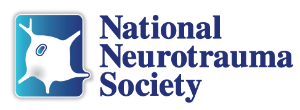Main Menu
Sunday Sessions
Chair: Ann Parr, MD, PhD; University of Minnesota
- Strengths and Limitations of Spine Trauma Databases and Registries - Marjorie Wang, MD; Medical College of Wisconsin
- Spine Trauma in the Osteoporotic Patient: What Does the Evidence Support? Erica Bisson, MD; University of Utah
- Can the Trauma System Support STASCIS and the Need for Immediate Surgery? Michael Fehlings, MD, PhD; University of Toronto
Description
This session will discuss three controversial elements related to care and management of the post-traumatic spine.
Educational Objectives
- Understand the advantages and limitations for utilization of regional and national trauma databases to evaluate trends in clinical management of the post-traumatic spine.
- Evaluate and discuss the evidence for neurological deficits associated with spinal fractures in osteoporotic patients.
- Discuss the effects of the recent clinical trial, Surgical Treatment of Acute Spinal Cord Injury Study (STASCIS) and the challenges that implementation of the findings will have on the trauma care systems.
Chair: Daniel Michael, MD, PhD; Michigan Head & Spine Institute
- Did RESCUE-ICP save intracranial pressure monitoring? - Martina Stippler, MD; Harvard Medical School
- Are we getting any better at detecting cortical spreading depression/spreading depolarization? - Gregory Hawryluk, MD, PhD; University of Utah
- Hyperbaric Oxygen Therapy for Acute Severe Traumatic Brain Injury: History, and 30 Year Outcomes - Molly Hubbard, MD; University of Minnesota
Description
This session will address three specific topics in the current treatment of patients with traumatic brain injury (TBI): the role of intracranial pressure monitoring; the detection and significance of spreading depression after TBI; and, hyperbaric oxygen therapy for TBI.
Educational Objectives
-
Describe the utility of hyperbaric oxygen therapy for TBI
-
Describe the phenomenon of spreading depression in relation to TBI.
-
Outline the utility of intracranial pressure monitoring and current questions regarding its use in TBI.
Sponsored by 
Speaker: Uzma Samadani, MD; University of Minnesota
Description
This session will describe new approaches to brain tissue oxygen monitoring. There is ample evidence supporting the need for a better vital sign than intracranial pressure (ICP) for patients having endured a traumatic brain injury (TBI). Multiple prospective randomized trials have been completed (e.g. DECRA, EUROTHERM,RESCUEicp) that have raised more questions than answers about the current state of TBI management. The feasibility of utilizing a treatment protocol based on ICP and brain tissue oxygen (PbtO2) monitoring was evaluated in the BOOOST II trial, which was completed in late 2013. Results of this trial, as well as other data supporting the value of utilizing brain tissue oxygen monitoring for TBI management, will be reviewed and discussed.
Chair: Jamie Ullman, MD; Northwell Health
- Does Trauma Cause CTE? - Lili-Naz Hazrati, MD, PhD; University of Toronto
- What are the consequences of subconcussion? - Scott Zuckerman, MD; Vanderbilt University Medical Center
- What needs to be admitted for pediatric brain trauma? - Rebekah Mannix, MD; Boston Children's Hospital
Description
The session will discuss the definition, outcomes, and controversies surrounding subconcussion and repetitive brain trauma in sports. The most recent research surrounding subconcussive head impacts in soccer heading, American football, and other contact sports will be thoroughly reviewed, with an emphasis on potential acute and long-term adverse effects in the areas of neurocognitive testing, postural stability, symptoms, neuroimaging, and serum biomarkers. At its conclusion, a succinct summary of the evidence surrounding subconcussion in sports and potential adverse effects will be provided.
Educational Objectives
- Define the clinical entity of subconcussion, along with its many synonymous terms, including subconcussive head impact, subconcussive brain injury, repetitive brain trauma and repeated head impacts.
- Explain the current state of research surrounding subconcussion in soccer heading and its effects on acute and long-term clinical outcomes.
- Explain the current state of research surrounding subconcussion in American football and other contact sports and its effects on acute and long-term clinical outcomes.
- Compare and contrast the methodological differences of studies that have shown adverse effects from subconcussive impacts compared to those that have shown no effect.
- Summarize the totality of evidence surrounding subconcussion and potential adverse effects on athletes of all ages.
Chair: Uzma Samadani, MD; University of Minnesota
- Should we rest athletes after concussion? - John Leddy, MD; SUNY Buffalo
- Do helmets make contact sports safer? - Brittany Coats, MD; University of Utah
- Is it time to ban sports for children and where should we draw the line? - Zachary Kerr, PhD; University of North Carolina Chapel Hill
Description
From the movie theater to the local newspaper, there is widespread public interest in the management of concussion and head injury in sport. This session will highlight some recent controversies related to traumatic brain injury in sports, with a particular focus on pediatric populations.
Educational Objectives
-
Discuss current evidence on the merits and risks associated with periods of low activity/ rest for athletes after traumatic brain injury.
-
Review recent discoveries in data related to the safety of helmets in contact sports.
-
Describe and discuss recent findings related to short and long-term risks of cognitive impairment in children who participate in contact sports.
